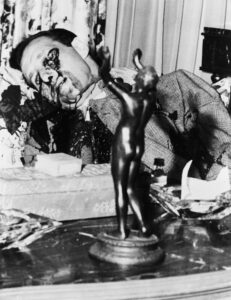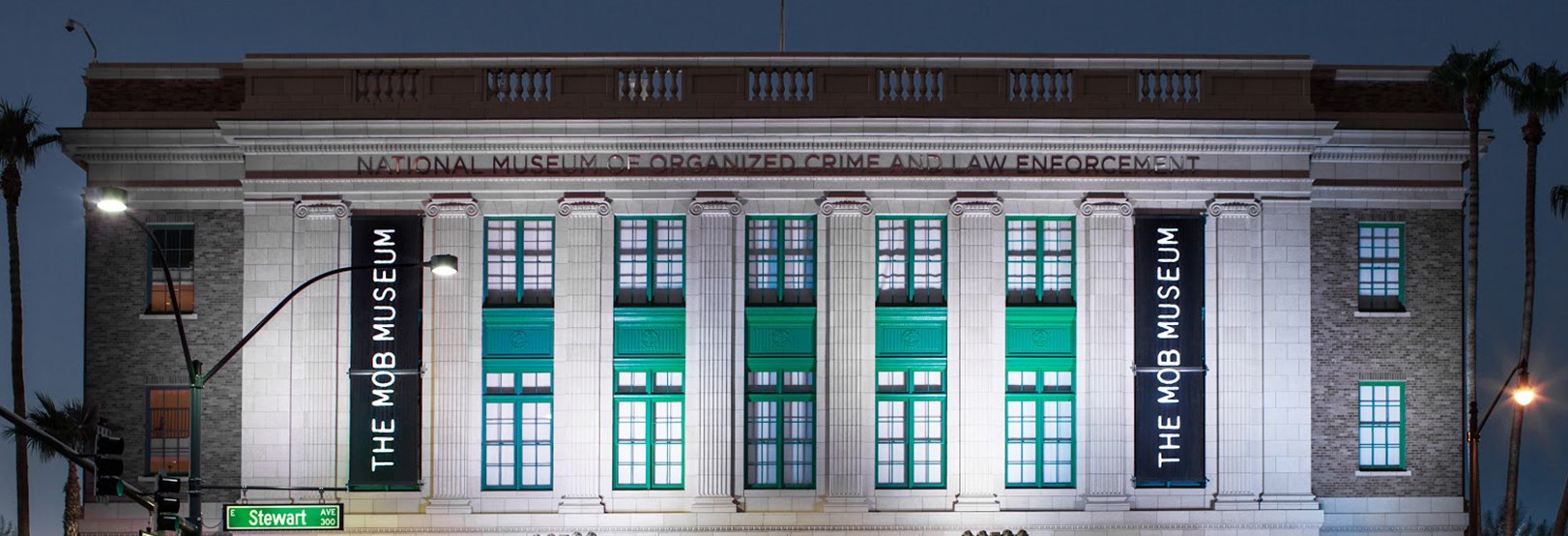
Bugsy Siegel death house for sale in Beverly Hills
Mobster murdered in mansion he leased for girlfriend Virginia Hill

The Beverly Hills, California, mansion where Benjamin “Bugsy” Siegel was shot to death in 1947 is on the market for $16.9 million, giving many their first glimpse, through current photographs, of the home’s lavish interior.
Though the house at 810 N. Linden Drive has seven bedrooms and seven bathrooms, people familiar with Mob lore are drawn to one room in particular — the living room where the 41-year-old mobster was killed by a gunman firing through a window from outside the home.
Siegel had leased the residence for his girlfriend, Virginia Hill. The lease was due to expire in three days. She was not there, having left for Paris, as her relationship with Siegel was becoming increasingly volatile. Siegel had flown in from Las Vegas to retrieve clothing and other personal items while awaiting a visit from his daughters arriving by train from their home in New York. He was planning to take them to Canada on vacation.
Before that could happen, the gunman ended Siegel’s life, sparking curiosity about the house that continues to this day, with people regularly driving up and pulling over to photograph the palatial exterior.
The inside has been less available for public viewing. Myra Nourmand, the real estate agent handing the sale, said in a telephone interview that tours are available only to serious potential buyers, not “lookie-loos” who just want a peek at the interior and famous living room.
However, she said the living room, though refurbished, including a new fireplace mantel, is the same as it was on the night when Siegel was killed. For instance, the windows are the same that the gunman peered through, though the panes have been upgraded.
Overall, the room is “beautifully furnished,” she said. “It’s a lot nicer than it was. You would never know there was a shooting.”
Siegel shooting remains unsolved
On December 26, 1946, about six months before Siegel was shot to death, he opened the Flamingo Hotel south of Las Vegas on the highway to Los Angeles. Virginia Hill was with him for the grand opening.
That highway, now lined with megaresorts, is known today as the Las Vegas Strip. The Flamingo is still at the same location, though none of the original buildings remain.

Siegel had taken over construction of the Flamingo from Billy Wilkerson, a Los Angeles nightclub operator and publisher of the Hollywood Reporter. A compulsive gambler who burned through money, Wilkerson lacked the financial wherewithal to complete the project.
The Flamingo didn’t remain in Siegel’s hands for long. Just before 11 p.m. on June 20, 1947, a gunman aiming a carbine from outside the house fired nine shots at Siegel where he sat on a couch only 14 feet away, striking him four times, killing him instantly. Allen Smiley, a Siegel associate, also was on the couch when the shooting started. A bullet ripped Smiley’s jacket, grazing his left arm.
Photographs showing a bloodied and lifeless Siegel on the couch are in mass circulation online and in print publications, serving as a reminder of the underworld violence during that era. The shooting was dramatized in the 1991 movie Bugsy, starring Warren Beatty as Siegel and Annette Bening as Hill.
Several theories exist for why Siegel was shot. Some believe leaders of the East Coast crime syndicate financially backing the Flamingo project were upset about cost overruns. Others contend Siegel was gunned down in a battle to control the race wire transmitting results from horse tracks across the country to bookmakers in the West. Another theory holds that a brother of Hill’s, upset at Siegel for brutally mistreating her, fired the fatal shots.
While these and other theories are the subject of continued debate, the gunman has never been positively identified. The Beverly Hills Police Department considers the high-profile killing to be an open case and will not release the Siegel file.
Special place
Nourmand, the real estate agent, said most potential buyers are not spooked that a murder occurred at the home.
California Realtors are required to reveal recent deaths at a residence, with certain exceptions, but the Siegel shooting is no secret. It is highlighted in the home’s picture presentation on the Nourmand and Associates website.

Nourmand said the residence is spectacular, with an impressive architectural appearance from the street. The 7,092-square-foot home, built in 1928 and sitting on a half-acre lot, has “a tremendous presence,” she said.
Inside, the Spanish Colonial mansion features original stained glass and wrought iron, as well as hand-pained tiles, hardwood floors and beamed ceilings.
Even so, high-end buyers sometimes flatten older homes to start over with a modern showpiece.
Also, some buyers demolish houses that have been the site of killings, including, in Southern California, the Cielo Drive home where Charles Manson followers killed pregnant actor Sharon Tate and four others in August 1969, scrawling “pig” in Tate’s blood on the front door.
Nourmand said she doubts a buyer will tear the Linden Drive home “down to the studs,” though a new owner might choose to do some remodeling.

With its high ceilings, natural light and redone bathrooms and kitchen, the North Linden residence has a special appeal inside and out that can’t be matched, she said.
“They don’t build them like that anymore,” Nourmand said.
‘A Mob shrine’
Historian Larry D. Gregg said the Siegel death house might not appeal to all buyers, but he stressed that it has a distinctive mystique.
“So many Americans love the lore and gore associated with organized crime,” he said in an email. “For those who have followed the Siegel saga, it likely would have a great appeal. The new owners could entertain guests with tales of this fascinating person who once leased the property.”
Gragg, author of Benjamin ‘Bugsy’ Siegel: The Gangster, The Flamingo, And the Making of Modern Las Vegas, said the luxurious mansion “fits Siegel’s tastes.”
“This man, born in poverty on the Lower East Side of New York, engaged in true conspicuous consumption whether in wardrobe, his automobiles or where he lived,” Gragg said.
With an apartment in New York City’s Waldorf Astoria and other residences, Siegel enjoyed proving that he had overcome his modest origins, Gragg said.
“It adds much to the mystery of his death in the sense that he was not murdered out in the desert or on a deserted street,” the author said. “Siegel died in a stunning home.”

Mob expert Eric Dezenhall, whose published books include fiction and nonfiction on organized crime, said he doesn’t know many people who would want to live in a murder house, “but the prospect of having dinner guests over and getting a midnight visit from the ghost of Bugsy Siegel would be kind of cool.”
“I can see a Hollywood director going for it,” Dezenhall said in an email.
Dezenhall said the well-known death photograph of Siegel on the couch “with his face bloody and eye popped out is a cultural meme and a parable.”
“It’s everything we love about the Mob in one image — the glamor and the violence, not unlike why we can’t let go of the JFK assassination,” Dezenhall said. “If the Mob is a secular American religion, the Linden house is a shrine.”
Larry Henry is a veteran print and broadcast journalist. He served as press secretary for Nevada Governor Bob Miller, and was political editor at the Las Vegas Sun and managing editor at KFSM-TV, the CBS affiliate in Northwest Arkansas. Today, he is a senior reporter for Gambling.com. The Mob in Pop Culture blog appears monthly.
Feedback or questions? Email blog@themobmuseum.org





